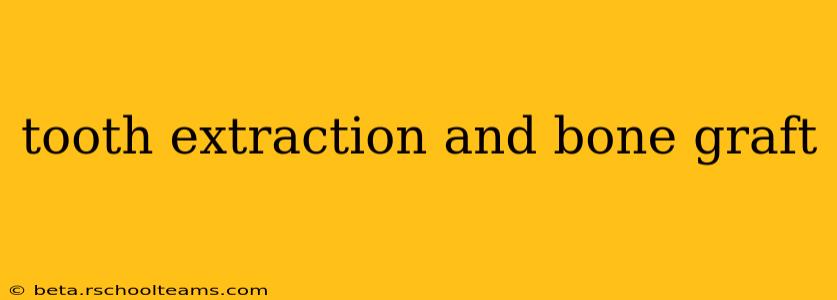Losing a tooth can be a significant event, impacting not only your smile but also your oral health and confidence. While tooth extraction is sometimes necessary, it can lead to bone loss in the jaw. This is where a bone graft comes in. This comprehensive guide will explore the intricacies of tooth extraction and bone grafting, addressing common concerns and providing valuable information for those facing this procedure.
What is a Tooth Extraction?
A tooth extraction is the surgical removal of a tooth from its socket in the jawbone. There are various reasons why a tooth might need to be extracted, including:
- Severe decay: When a cavity is too extensive to be repaired with a filling or crown.
- Periodontal disease (gum disease): Advanced gum disease can damage the supporting structures of the tooth, making extraction necessary.
- Impacted teeth: Teeth that are unable to erupt through the gums, often wisdom teeth.
- Trauma or injury: Teeth damaged by accidents or injuries may require extraction.
- Orthodontic treatment: Sometimes, teeth are extracted to create space for other teeth to move into proper alignment.
What is a Bone Graft?
After a tooth extraction, the jawbone begins to resorb, meaning it slowly loses density and volume. This bone loss can make it challenging to place dental implants later on. A bone graft is a surgical procedure that involves adding bone material to the area where a tooth has been extracted. This added bone material helps to:
- Preserve jawbone volume: Preventing further bone loss.
- Provide a stable foundation for dental implants: Ensuring successful implant placement.
- Improve the aesthetics of the jawline: Restoring a more natural contour.
What are the different types of bone grafts?
Several types of bone grafts exist, categorized by the source of the bone material:
- Autograft: Bone taken from another site in the patient's own body (e.g., the chin or hip). This is considered the "gold standard" due to its excellent integration with the host bone.
- Allograft: Bone taken from a deceased donor. This bone is processed and treated to reduce the risk of disease transmission.
- Xenograft: Bone taken from an animal source, usually a cow.
- Alloplast: Synthetic bone substitutes made from materials like calcium phosphate.
Why is a Bone Graft Necessary After a Tooth Extraction?
Bone grafting is frequently recommended after a tooth extraction, particularly when planning for future dental implant placement. Without a bone graft, the jawbone may not have sufficient volume and density to securely support an implant, potentially leading to implant failure. The bone graft provides the necessary structural support for long-term success.
How is a Bone Graft Performed?
The procedure typically involves a minor surgical intervention. The surgeon will create a small incision in the gum tissue to expose the extraction site. The bone graft material is then carefully placed into the site, and the gum tissue is sutured closed. The healing process usually takes several months, allowing the grafted bone to integrate with the existing bone.
What are the Risks and Complications Associated with Bone Grafting?
While generally safe, bone grafting procedures carry potential risks and complications, including:
- Infection: As with any surgical procedure, there's a risk of infection.
- Bleeding: Excessive bleeding can occur.
- Nerve damage: Rare but possible, especially if the graft is near a nerve.
- Graft rejection: The body may reject the grafted bone material, though this is less common with autografts.
How Long Does Recovery Take After a Tooth Extraction and Bone Graft?
The recovery time varies depending on the individual and the extent of the procedures. You can expect some discomfort, swelling, and bruising in the days following the surgery. Stitches, if used, will be removed after a week or two. Full bone integration typically takes several months.
What is the Cost of a Tooth Extraction and Bone Graft?
The cost varies significantly based on geographical location, the complexity of the procedure, and the type of bone graft used. It's best to consult with a dentist or oral surgeon to get a personalized cost estimate.
What are the alternatives to bone grafting?
In some cases, alternatives to bone grafting might be considered, such as using a smaller dental implant or a different type of implant that requires less bone support. However, these options are not always suitable, and the dentist will determine the best course of action based on individual needs.
This information is for educational purposes only and should not be considered medical advice. Always consult with a qualified dentist or oral surgeon to discuss your specific situation and determine the best treatment plan for you.
